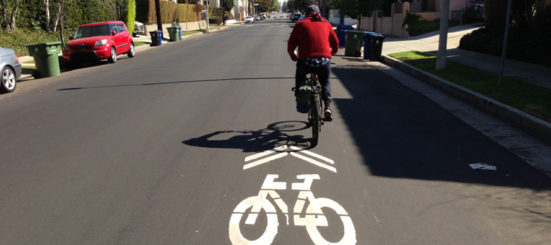MassDOT Announces Pedestrian and Bicycle Safety Awareness and Enforcement Program
July 08, 2014

On April 28, MassDOT announced that 12 municipalities in Massachusetts would be receiving a portion of $461,851 as part of the Pedestrian and Bicycle Safety Awareness and Enforcement program. The municipalities that will receive the funds this year are Brockton, Cambridge, Fall River, Haverhill, Lynn, New Bedford, Newton, Pittsfield, Quincy, Salem, Somerville, and Watertown, and additional municipalities may receive funds in the future. Municipalities with a disproportionate number of crashes involving pedestrians and bicycles and/or had significant pedestrian and bicycle volumes were chosen for the program.
Each municipality will be able to choose how and where their funds will be used. They are expected to target areas where there have been past pedestrian crashes, or where there are significant “barriers” to safe pedestrian and bicycle travel that currently prevent walking and bicycling (or make doing so unsafe or unappealing).
The program aims to address two issues that impact pedestrian and bicycle safety. Improvements to pedestrian and bicycle awareness may include the addition of bicycle lanes or shared lane markings (or “sharrows” and shared lane signage, as well as educational programs, such as information on the rules of the road and the health benefits of walking and bicycling. Increased enforcement will focus on all roadway users – motorists, pedestrians, and bicyclists – and will likely target problem areas, such as areas with a history of pedestrian and bicycle crashes or areas with low compliance with the rules of the road, such as locations where motorists ignore “No Turn on Red” signage or where pedestrians cross without the “WALK” signal. Law enforcement may consist of “soft enforcement”, where offenders are given safety information and a warning rather than a citation. In some cases, offenders will be asked why they disregarded the rules of the road in order to collect information that may be used to make infrastructure improvements in the future. For example, a bicyclist may run a red light because there is a lack of bicycle detection at a signal, and a pedestrian may cross a roadway without a “WALK” signal if the wait is perceived to be too long.
These safety improvements will hopefully make walking and bicycling in the Commonwealth safer and more enjoyable. They may also increase the level of understanding between roadway users. For example, at public meetings for projects involving bicycle accommodations, attendees often state that bicyclists do not always follow the rules of the road. Improved enforcement and education may improve compliance for bicyclists in addition to pedestrians and motorists. Additionally, improved safety conditions may result in increased volumes of pedestrians and cyclists, which in turn tends to lead to improved compliance with traffic laws.
Where would you like to see increased efforts to improve bicycle and pedestrian safety? Would you increase your walking or bicycling habits if one particular point in your journey was safer?
> Read the original press release.

Leave a Comment